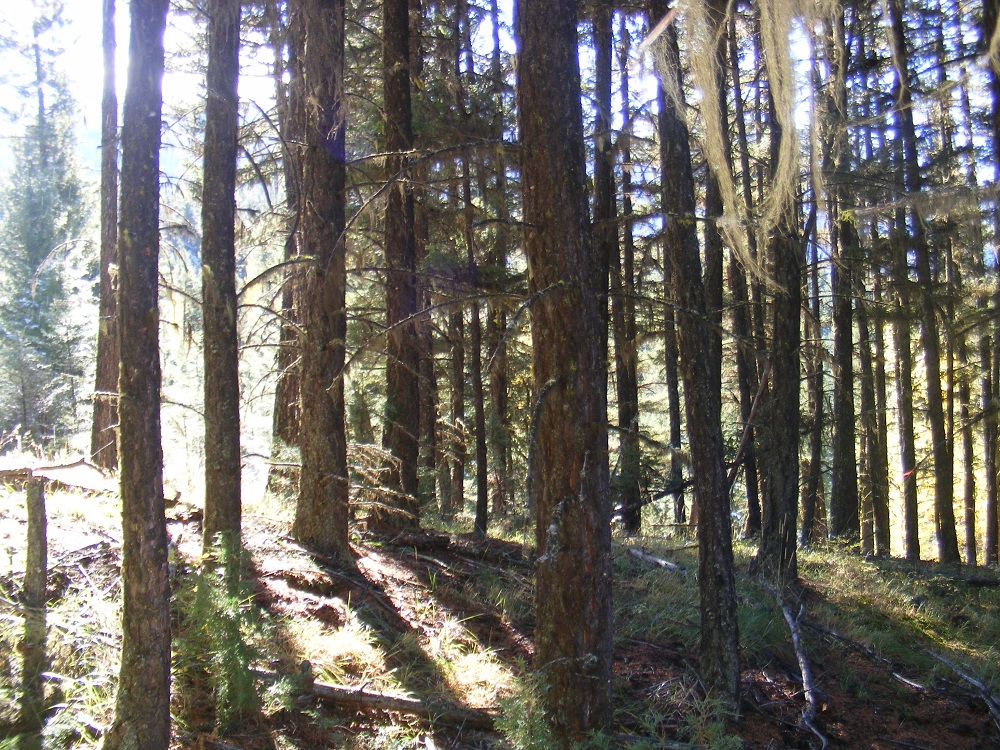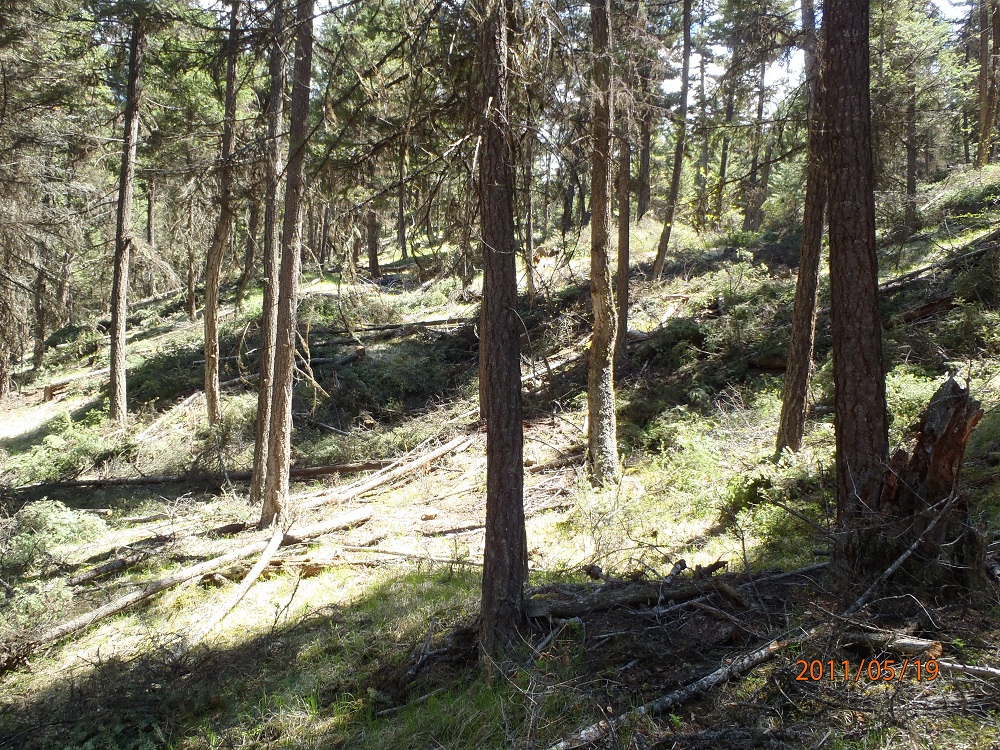Gibbs Creek Forest Restoration
The dry Douglas fir forest near the headwaters of Gibbs Creek is a common ecosystem type in Xaxli’p Territory. These forests are fire-maintained ecosystems – that is, they require regular low-intensity fires to maintain an open, old growth forest structure. However, in the last century, fire suppression and high-grade logging has changed the forests from open, old growth forests to dense, young forests. The forests at Gibbs Creek now have few old growth trees and a high density of young Douglas fir trees.
Our objectives at Gibbs Creek are to restore an open, patchy old growth structure of the forest, increase understory shrubs and herbs, improve timber quality, and reduce fire hazard. We selected a 2.5 hectare patch of forest to carry out eco-cultural restoration.
Eco-cultural Restoration Prescription
The broad goals at Gibbs Creek are to restore the old-growth forest composition and structure, and to improve the health of understory shrubs and herbs. In 2010, we carried out a forest survey to determine what the forest looks like now, and what the forest would have looked like in past centuries when there were regular fires passing through the understory. We found that in conditions where regular fires burned through the forest, there would be about 250 trees per hectare. However, since fire fighting has come into effect, about 2000 trees have grown in, and the forest is now very dense. Our goal is to reduce the density of the forest so that it looks similar to how it looked when fires regularly burned the understory.
We decided to split the area into two sub-units that received different restoration treatments. By doing this, we can compare the results of the different methods, and learn which method suits this type of forest the best. The restoration prescription included the following treatment specifications:
- In the first sub-unit, thin the forest to a density of about 250 trees per hectare.
- In the second sub-unit, thin the forest to a density of about 450 trees per hectare.
- Leave the largest, healthiest trees standing.
- Leave all of the large, dead trees standing. These trees will serve as wildlife trees while standing. Once these trees fall, they will be important for small animal habitat, soil building, and water retention and purification.
- Restore the patchy structure of old-growth forests by leaving trees in a similar pattern to the pattern of old-growth stumps.
- Clear out trees around xusum and juniper to restore the vigor of these plants.
- Where possible, fall the trees across the slope to capture the flow of water on the ground surface.
- Leave any old fallen trees intact, as they are important for animal habitat, soil building, and water retention and purification.
- Lop and scatter the trees that are cut.
- Make firewood out of slash for community members.
- Prune the leave trees up to 2 meters high to reduce ladder fuels.
This forest is not a timber management area. Although the site is relatively productive, damage from past logging and ecological conditions such as soil creep have created poor quality and low-value wood.


